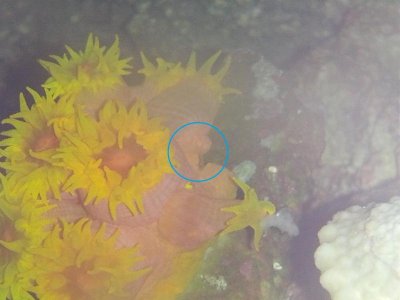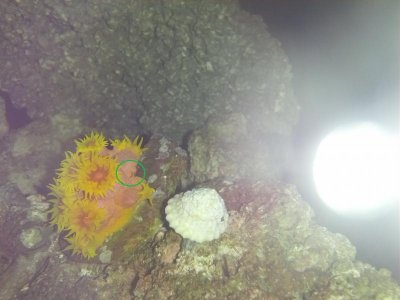apparently parasites and Predators that can attack tubastreas are:
Phestilla melanobrachia (Bergh, 1874) This is a large Nudibranch (40mm) and is distributed throughout the Western Pacific. The colour of this "œsea slug" matches that of the Tubastraea species upon which it feeds.
Cochlodinium catenatum: Adinoflagellate(a species of microscopic algae) that causes coral mortality, and / or tissue sloughing
Ostreobium Quekettii: A ubiquitous boring algae that lives in the skeleton of stony corals. Once a coral is stressed, this algae may become problematic by increasing its growth, exacerbating recession, and allowing for other disease and necrosis to occur. (Le Campion-Alsumard et al. 1995).
Oscillatoria spp.: A blue-green cyanobacteria that grows upon the coral, using its mucus as a nutrient source. It is believed that products of this algae's metabolism are toxic to the "œhost" coral, and, if left unchecked, this encroachment will end in the death of the coral.
Oscillatoria submembranacea: As previously mentioned this is a reddish / brown cyanobacterium that will feed and develop upon any detritus on the body of the coral. As this filamentous algae spreads, smothering the coral, the coenosarcwill be destroyed, and eventually this will lead to the death of the coral.
polychaete worms emerge from the reef to spawn. Here the large polyps of a Tubastrea coral are taking advantage of the bounty. At least three polyps are eating worms in this photo.
Phestilla Nudibranchs: Cryptic Enemies of Porites, Goniopora, Tubastrea and Dendrophyllia Corals and an Identification of 'Montipora-eating Nudibranchs'
By Dana Riddle
http://www.advancedaquarist.com/2012/6/inverts




